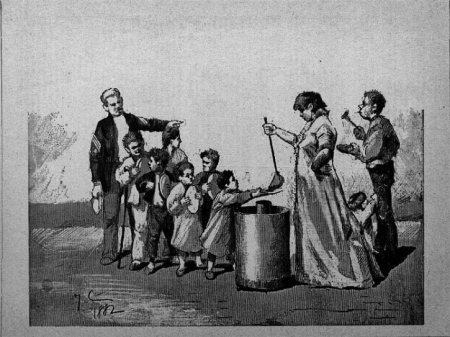 Back in the early nineteenth century, with populations in cities swelling, feeding the poor cheaply in poorhouses and public hospitals became a growing concern.
Back in the early nineteenth century, with populations in cities swelling, feeding the poor cheaply in poorhouses and public hospitals became a growing concern.
In her fascinating book, Gulp, Mary Roach describes the efforts of a French chemist named Jean d’Arcet, Jr., who in 1817 came up with a method for extracting gelatin from bones. I’m not sure why this was such a complicated undertaking—anyone who has ever boiled up a turkey carcass after the Thanksgiving meal would see that the resulting broth, if allowed to cool, gets all jiggly and gelatinous. But d’Arcet seems to have figured out how to reduce his “extract of bones” down to pure, concentrated gelatin.
He peddled his glop to public hospitals and poor houses, claiming that two ounces of his gelatin was equal in nutrition to three pounds of meat.
So gelatin soup became standard fare in places that fed the poor for the next twenty years, despite “criticisms and complaints.”[1] It wasn’t until 1831 that a group of physicians decided to test the gelatin soup against traditional bouillon. They found it “more distasteful, more putrescible, less digestible, less nutritious”[2] in comparison.
But not much was done, aside from forming a “Gelatin Commission.” As Roach so brilliantly puts it, “The French Academy of Sciences sprang into inaction.”[3]
It took ten more years for the Gelatin Commission to declare the gelatin soup ineffective. This after feeding it to dogs and finding the soup excited “an intolerable distaste to a degree which renders starvation preferable.”[4]
Sources:
Mary Roach, Gulp: Adventures on the Alimentary Canal, New York: WW Norton, 2013
Dawson, Percy M. A Biography of François Magendie. Brooklyn: Albert T. Huntington, 1908 [1] Dawson, 33
[2] Dawson, 33
[3] Roach, 85
[4] Dawson, 34-5